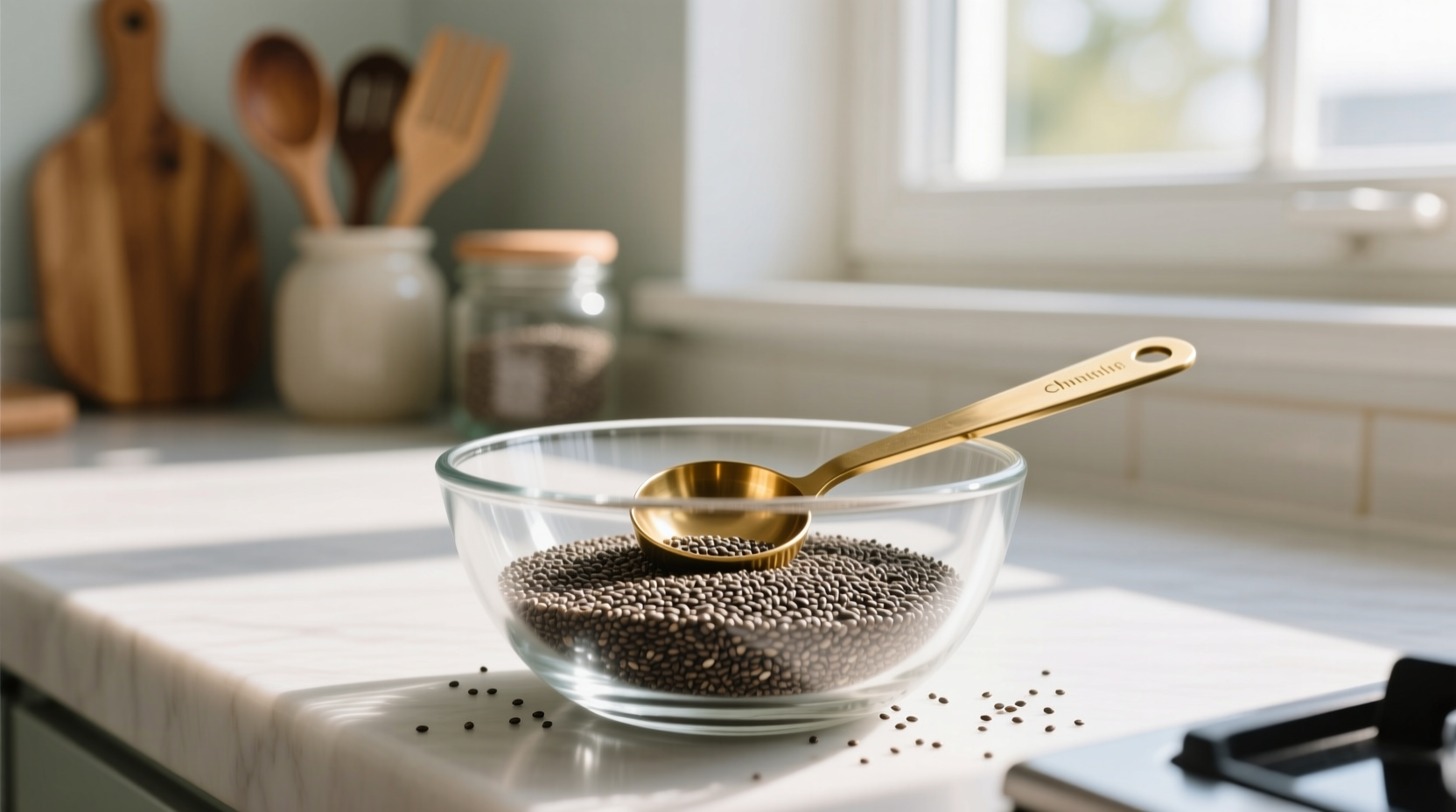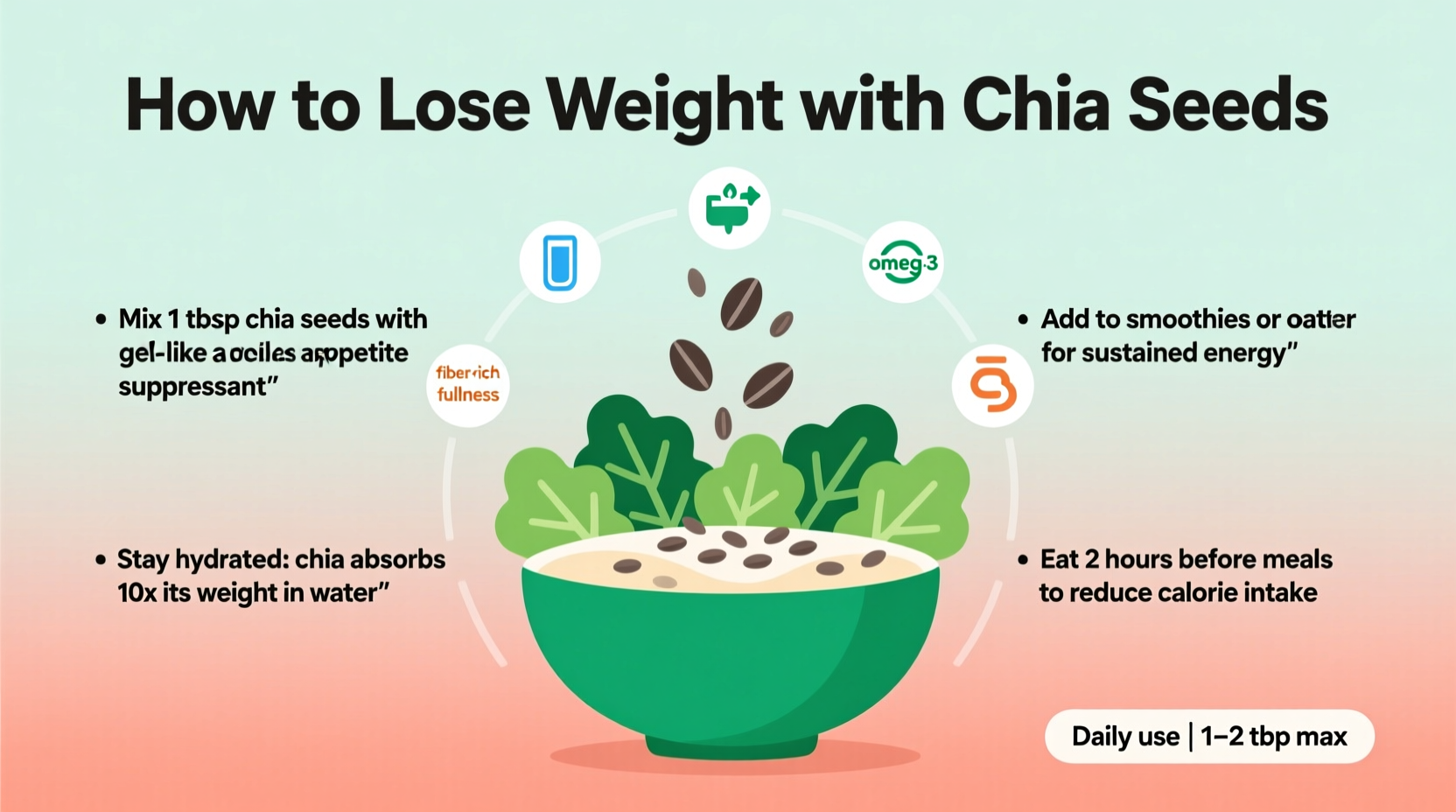
The Science Behind Chia Seeds and Weight Management
Chia seeds have gained attention in nutritional science for their potential role in weight management. These tiny seeds pack a powerful nutritional profile that may support healthy eating habits when used correctly. Let's examine what research actually says about chia seeds and weight loss.
Chia seeds contain approximately 10 grams of dietary fiber per ounce (28g), representing 34-40% of the recommended daily fiber intake. This high fiber content creates a gel-like substance when mixed with liquids, which expands in your stomach and may help you feel fuller longer. According to a National Institutes of Health study, increased fiber intake correlates with reduced overall calorie consumption and better weight management outcomes.
| Nutrient | Per Ounce (28g) | Weight Management Benefit |
|---|---|---|
| Dietary Fiber | 10g | Promotes satiety, slows digestion |
| Protein | 4.7g | Preserves muscle mass during weight loss |
| Omega-3 Fatty Acids | 5g | Reduces inflammation associated with obesity |
| Calories | 138 | Low-calorie density for volume eating |
Practical Methods for Incorporating Chia Seeds
Understanding how to properly use chia seeds makes all the difference in your weight management journey. Here's what actually works based on clinical evidence and nutritional science:
Hydration Technique for Maximum Satiety
Mix 1 tablespoon of chia seeds with 3-4 ounces of water and let sit for 15 minutes until gel forms. Consuming this mixture 20-30 minutes before meals may help reduce your overall calorie intake by creating a feeling of fullness. A 2017 clinical trial demonstrated that participants who consumed chia gel before meals ate approximately 250 fewer calories during that meal compared to the control group.
Chia Seed Pudding for Healthy Breakfasts
Replace high-sugar breakfast options with chia seed pudding made from:
- 3 tablespoons chia seeds
- 1 cup unsweetened almond milk
- 1/4 teaspoon cinnamon
- 5 drops liquid stevia (optional)
Mix ingredients and refrigerate overnight. This provides 15g of fiber and keeps you full until lunch, preventing mid-morning snacking. Research from the Harvard T.H. Chan School of Public Health indicates that high-fiber breakfasts correlate with better weight management outcomes.
Smart Snacking with Chia Energy Balls
Create no-bake energy balls using:
- 1/4 cup chia seeds
- 1/2 cup rolled oats
- 2 tablespoons almond butter
- 1 tablespoon honey
- 1/4 cup chopped nuts
These provide sustained energy without blood sugar spikes. Unlike processed snacks, these energy balls deliver fiber, protein, and healthy fats that support metabolic health during weight loss.
Realistic Expectations and Limitations
While chia seeds offer nutritional benefits, they're not a magic solution for weight loss. Understanding these context boundaries will help you use them effectively:
When Chia Seeds Work Best for Weight Management
- As part of a calorie-controlled diet with balanced macronutrients
- When used to replace less nutritious, high-calorie foods
- Combined with regular physical activity (at least 150 minutes weekly)
- When consumed with adequate water (chia seeds require hydration to work properly)
When Chia Seeds Won't Deliver Results
- When added to an already high-calorie diet without other changes
- If consumed in excessive quantities (more than 50g daily may cause digestive issues)
- Without sufficient water intake (chia seeds absorb liquid and may cause discomfort)
- As a replacement for structured exercise and overall healthy eating patterns
A comprehensive review published in the American Journal of Clinical Nutrition concluded that while chia seeds can be a valuable component of a weight management strategy, they work best as part of a holistic approach rather than a standalone solution. The study found participants who incorporated chia seeds into a balanced diet lost approximately 1.5-2 pounds more over 12 weeks compared to control groups.
Optimizing Your Chia Seed Weight Management Plan
To maximize the benefits of chia seeds for weight management, follow these evidence-based recommendations:
Daily Timing Strategy
Consume chia seeds strategically throughout your day:
- Morning: Add to breakfast for sustained energy
- Pre-meal: 15-30 minutes before lunch/dinner to reduce portion sizes
- Afternoon: As part of a healthy snack to prevent evening cravings
Portion Control Guidelines
Start with 15-25g (1-2 tablespoons) daily and gradually increase to 25-50g as your digestive system adjusts. More isn't necessarily better—excessive consumption can lead to gastrointestinal discomfort and unnecessary calorie intake.
Hydration Requirements
For every tablespoon of chia seeds consumed, drink at least 8 ounces of water. Proper hydration ensures the fiber works effectively and prevents potential digestive issues.
Important Considerations for Safe Use
While generally safe, chia seeds may interact with certain medications or health conditions. Consult your healthcare provider before significantly increasing chia seed consumption if you:
- Take blood thinners (chia seeds contain omega-3s that may enhance blood thinning effects)
- Have difficulty swallowing or esophageal strictures
- Experience digestive sensitivities
- Are pregnant or breastfeeding
The Mayo Clinic recommends starting with small amounts and monitoring your body's response, as some individuals may experience digestive changes when first incorporating high-fiber foods.











 浙公网安备
33010002000092号
浙公网安备
33010002000092号 浙B2-20120091-4
浙B2-20120091-4